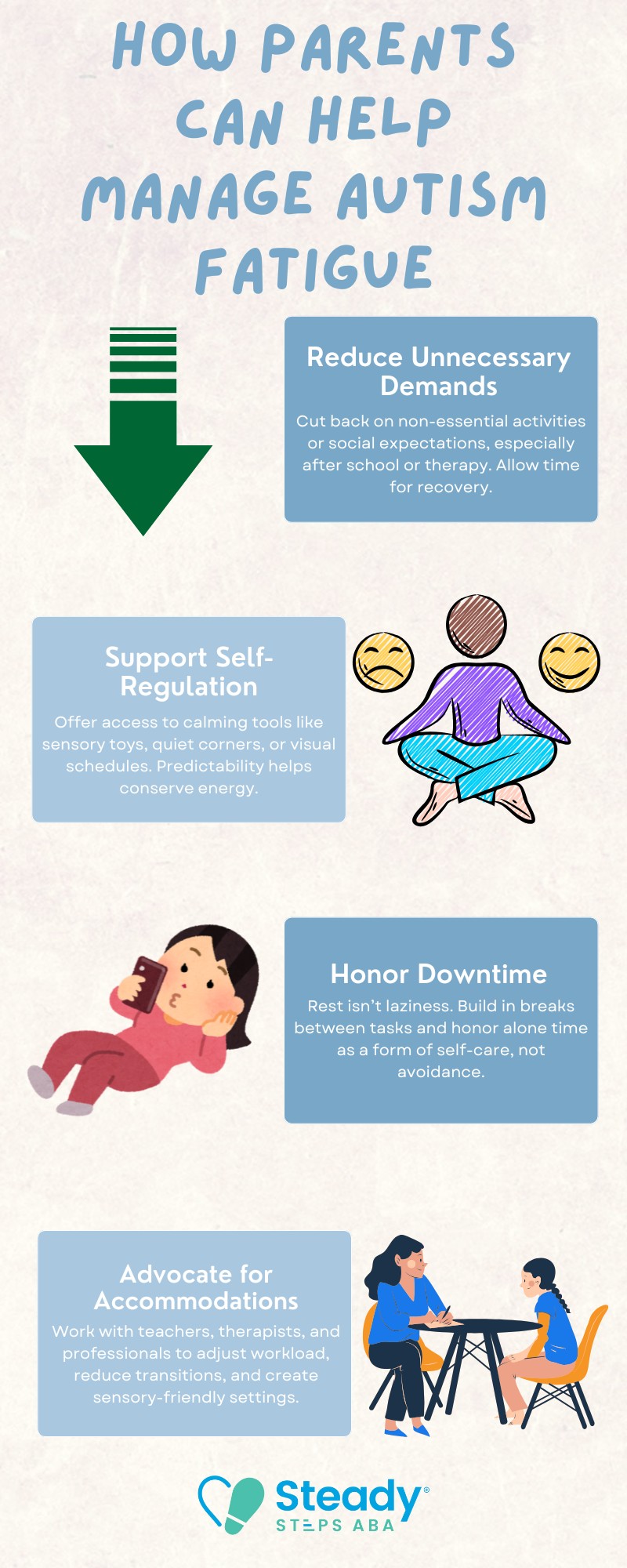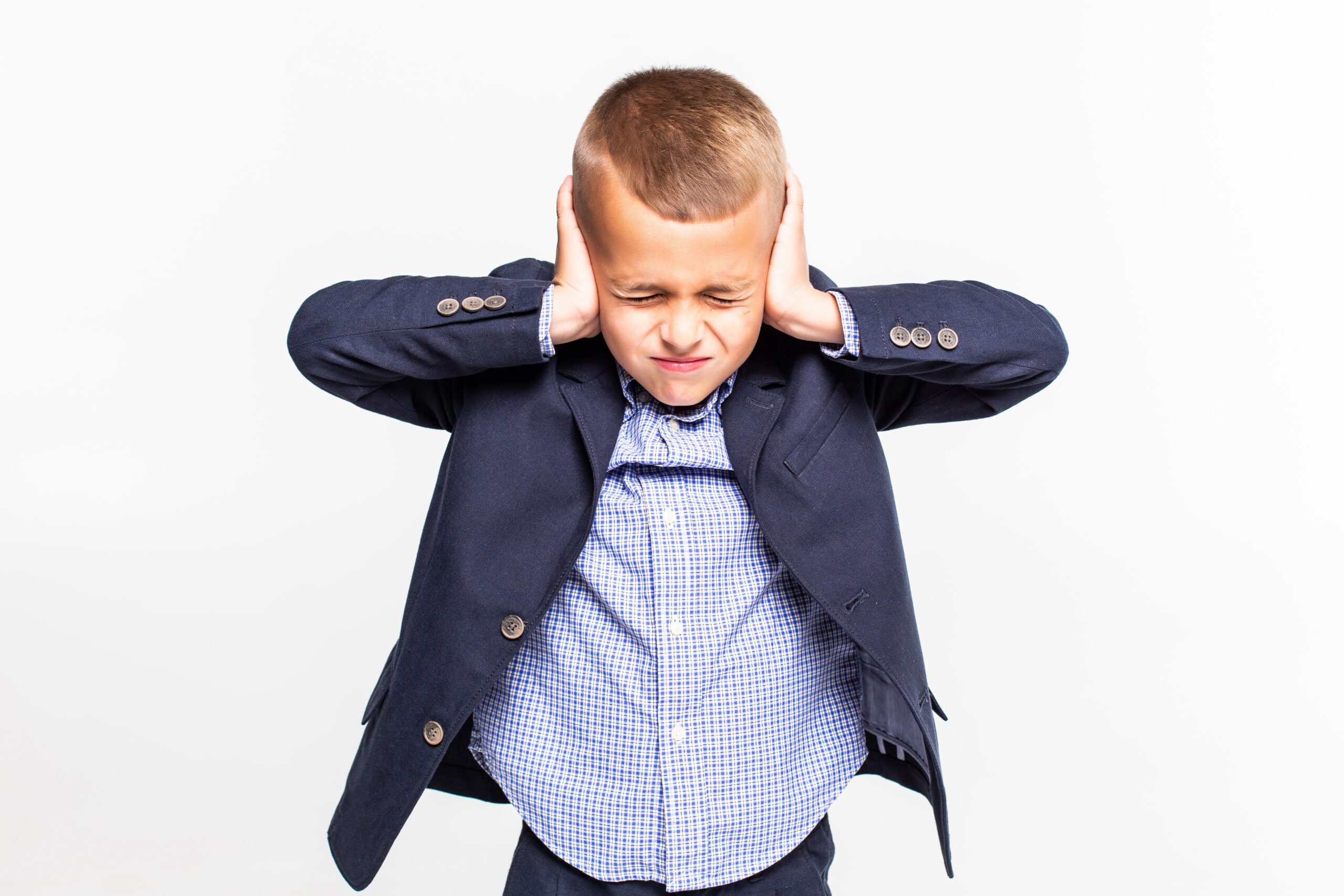Key Points:
- Fatigue in autism is often the result of sensory overload, constant masking, and emotional exhaustion.
- It may appear as irritability, shutdowns, or physical tiredness and is often misunderstood as laziness or defiance.
- Practical coping strategies can improve daily functioning and prevent long-term burnout.
Autistic children and adults often experience a type of exhaustion that goes far beyond being “just tired.” This persistent fatigue in autism can affect everything from focus and communication to emotional regulation. It’s often invisible to others, which makes it harder to validate and even harder to manage without support.
In this article, we’ll explore the common causes behind fatigue in autism, how to identify it, and what families and caregivers can do to help. Whether you’re a parent trying to support your child or an autistic adult seeking answers, this guide breaks it all down in plain, practical language.
What Is Fatigue in Autism?
Fatigue in autism refers to a chronic state of physical, mental, and emotional exhaustion caused by continuous sensory processing, social navigation, and self-regulation demands. It’s not simply about sleepiness—it’s a deep kind of tiredness that can affect body and mind, even when a full night’s rest has occurred.
Autistic individuals often spend more energy managing things that neurotypical people do automatically. This includes interpreting social cues, coping with unpredictable environments, or suppressing sensory sensitivities. Over time, this can lead to burnout—a long-term state of complete overwhelm.
What Are the Main Causes of Fatigue in Autism?
Fatigue in autism is rarely caused by just one factor. It’s often a result of several overlapping challenges—each one quietly draining energy reserves throughout the day. Recognizing these root causes is essential to providing the right kind of support.
Here are common contributors:
1. Sensory Overload
Autistic individuals may be more sensitive to light, sound, touch, or smell. Navigating environments that are too bright, noisy, or chaotic can quickly become exhausting, even if they appear to be managing externally.
2. Social Masking
Many autistic people mask their natural behaviors to “fit in” or avoid judgment. This might include forcing eye contact, mimicking social scripts, or suppressing stims. While effective short term, masking demands constant mental energy and can leave a person mentally depleted.
3. Communication Demands
Conversations require interpreting tone, body language, and abstract meaning. For some autistic individuals—especially those who are nonspeaking or have delayed language—daily interactions can feel like running a marathon.
4. Executive Functioning Struggles
Executive functioning controls tasks like planning, organizing, and switching attention. When these skills are affected, even simple routines can feel overwhelming and lead to exhaustion by midday.
5. Emotional Regulation
Processing emotions—both internal and from others—can be intense. Many autistic individuals struggle to filter emotional input or recover from stress, contributing to cumulative fatigue.

How Does Fatigue Show Up in Daily Life?
Fatigue in autism doesn’t always look like lying on the couch. It can take many forms, and often goes unnoticed or misinterpreted as laziness, non-compliance, or mood swings. Recognizing these signs is essential to offering the right kind of care.
Common signs include:
1. Post-Social Meltdowns
After masking during social events, individuals may experience emotional overload later, leading to meltdowns or shutdowns once they’re in a safe, private space.
2. Trouble Focusing
Mental exhaustion can make it difficult to stay on task, process information, or engage in conversation, especially after prolonged social or sensory effort.
3. Sensory Avoidance
When fatigued, sensory input becomes harder to tolerate. Previously manageable environments may suddenly feel overwhelming or even painful, prompting avoidance.
4. Physical Discomfort
Emotional fatigue may manifest physically, with symptoms like muscle aches, headaches, or general body discomfort, even without a medical cause.
5. Skill Regression
Basic tasks—like speaking clearly, brushing teeth, or completing routines—can temporarily become difficult after mentally or emotionally taxing situations.
6. Sudden Mood Swings
Fatigue lowers tolerance for stress, often leading to unpredictable emotional shifts, such as frustration, irritability, or tearfulness, with minimal triggers.
Because autistic fatigue is cumulative, it may not show up until after the challenging event has passed, such as the next day after school or a social outing.
What Is Autistic Burnout and How Is It Related?
Autistic burnout refers to intense mental, emotional, and physical exhaustion resulting from extended periods of masking, sensory strain, and lack of necessary support. It typically follows ongoing attempts to seem neurotypical without proper rest or accommodations.
This type of burnout is deeply linked to masking and imposter syndrome. When an autistic person constantly hides their traits to fit in, it drains energy and emotional resilience. Over time, this depletion can lead to shutdowns, skill regression, and a significant drop in functioning—hallmarks of autistic burnout. Understanding this connection is vital for offering long-term, sustainable support.
How Can Parents and Caregivers Help Manage Fatigue?
Support begins with recognition and validation. Once parents understand that fatigue in autism is real and not a matter of willpower, they can begin building routines and environments that reduce overwhelm.
Here are strategies that help:

When families make these adjustments consistently, autistic individuals are better able to maintain energy and avoid long-term burnout.
What Role Does Routine Play in Preventing Fatigue?
Routine provides predictability, which reduces the mental effort required to process new situations and decisions. For autistic individuals, this stability can lower sensory and emotional stress, helping prevent chronic fatigue and burnout.
Consistent routines help preserve cognitive energy by minimizing surprises and creating a sense of control. This doesn’t mean every minute must be rigidly scheduled—flexibility within structure is key.
Visual schedules, predictable transitions, and known recovery periods (like quiet time after social interaction) all support long-term energy management. When routines align with a person’s natural rhythm, it becomes easier to self-regulate and avoid exhaustion.
What Lifestyle Adjustments Can Help Reduce Fatigue in Autism?
Alongside emotional and environmental support, some daily habits can make a big difference in energy levels. These adjustments don’t need to be big—they just need to be consistent and responsive to the individual’s needs.
Helpful adjustments include:
1. Sleep Hygiene
Establishing a calm, consistent bedtime routine with sensory-friendly elements like blackout curtains and soft bedding helps improve sleep quality and reduces next-day fatigue.
2. Nutritional Support
A balanced diet with adequate hydration supports energy levels, focus, and mood stability, especially important for individuals managing sensory sensitivities or irregular eating patterns.
3. Physical Activity
Incorporating gentle physical movement, such as swimming, yoga, or walking, can enhance body awareness, improve sleep, and reduce stress-related fatigue.
4. Digital Boundaries
Limiting screen use—especially before bedtime—can improve sleep and reduce overstimulation that may lead to emotional or sensory fatigue.
5. Mental Pacing
Spreading out high-demand activities like therapy, school tasks, and chores allows for recovery time and prevents cognitive and emotional overload throughout the week.
These small steps can add up to a more sustainable daily rhythm, especially when paired with regular emotional check-ins.
Can ABA Therapy Help Individuals Manage Fatigue?
Yes, ABA therapy can help individuals manage fatigue by teaching energy-conservation skills, emotional regulation, and routine-building strategies. These supports reduce cognitive overload and help individuals identify patterns that lead to exhaustion.
In practice, ABA therapy may focus on developing coping strategies for transitions, teaching pacing skills, or helping create visual schedules to manage daily demands. While ABA doesn’t directly treat fatigue like a medical intervention, it helps reduce the behavioral and environmental triggers that contribute to burnout, especially in autistic individuals.
Help Your Child Navigate Challenges With ABA Therapy
Fatigue in autism is real, and managing it requires more than just rest. When families understand what’s behind the exhaustion and offer targeted support, it becomes possible to prevent burnout and protect long-term well-being.
Steady Steps ABA offers thoughtful, individualized ABA therapy in Maryland that addresses the whole child, not just their behaviors. Our team helps autistic children and families develop tools to manage energy, reduce overwhelm, and thrive in daily life.
Get in touch with us to learn how our ABA therapy services in Maryland can support your child’s growth with compassion, balance, and meaningful progress.






